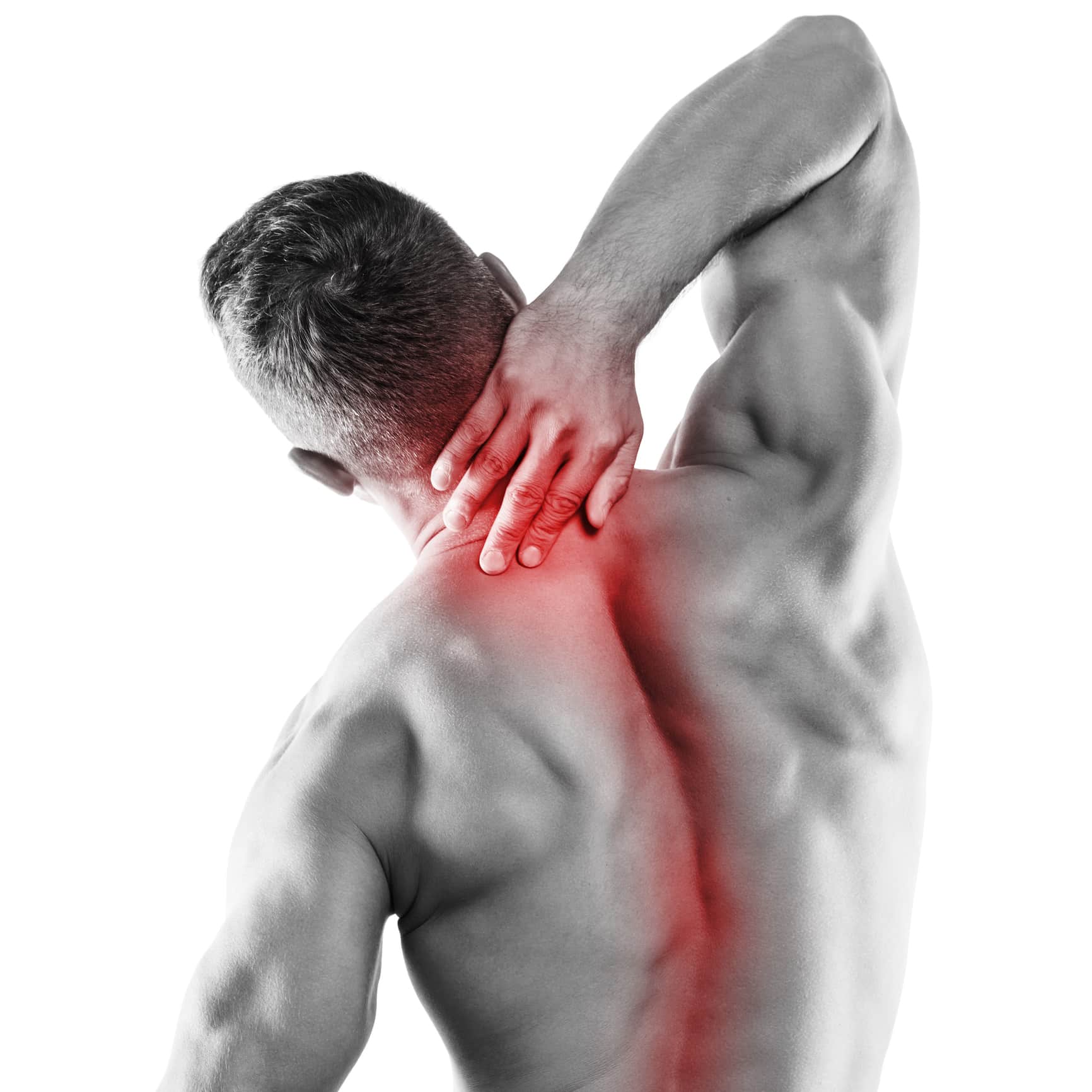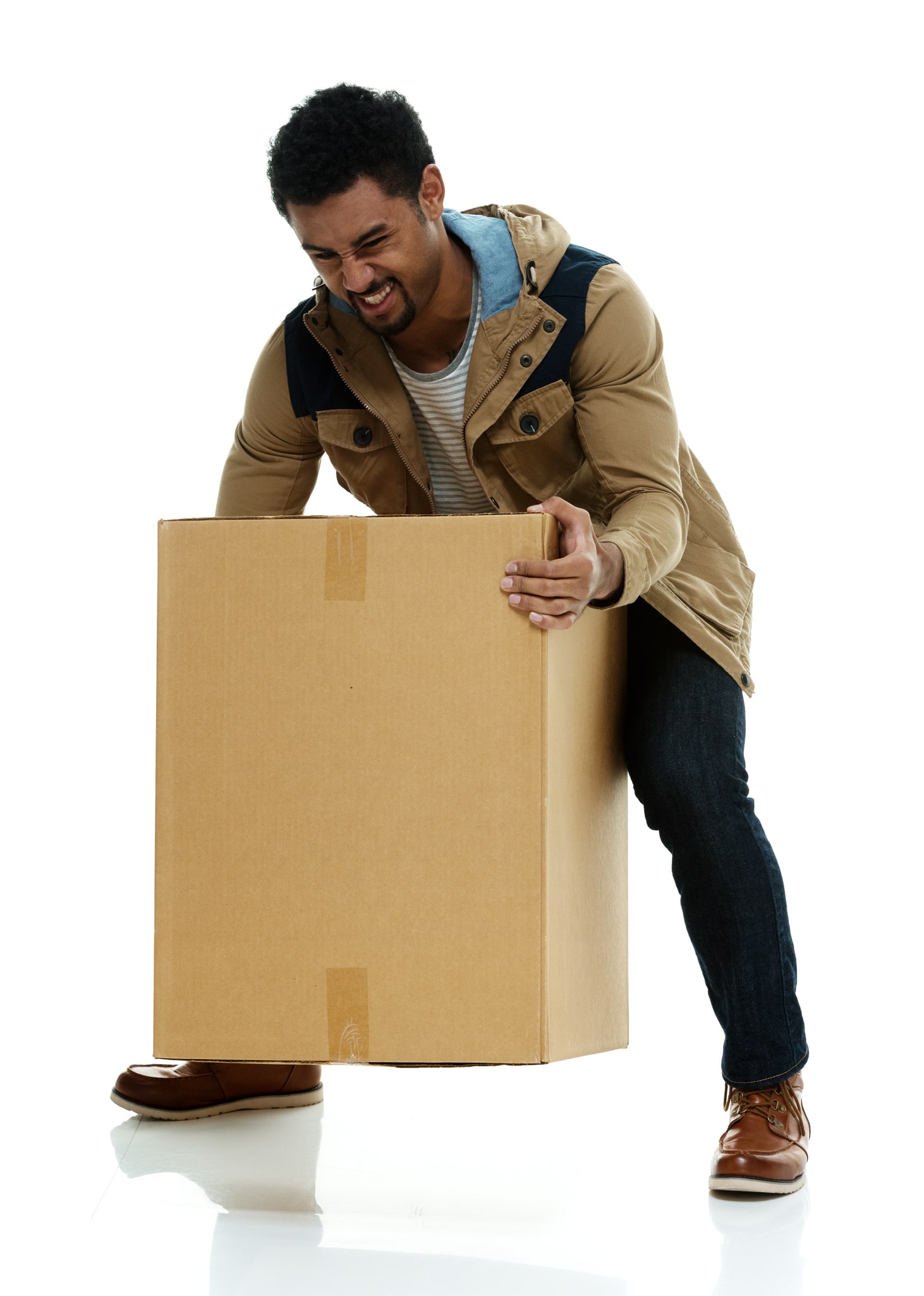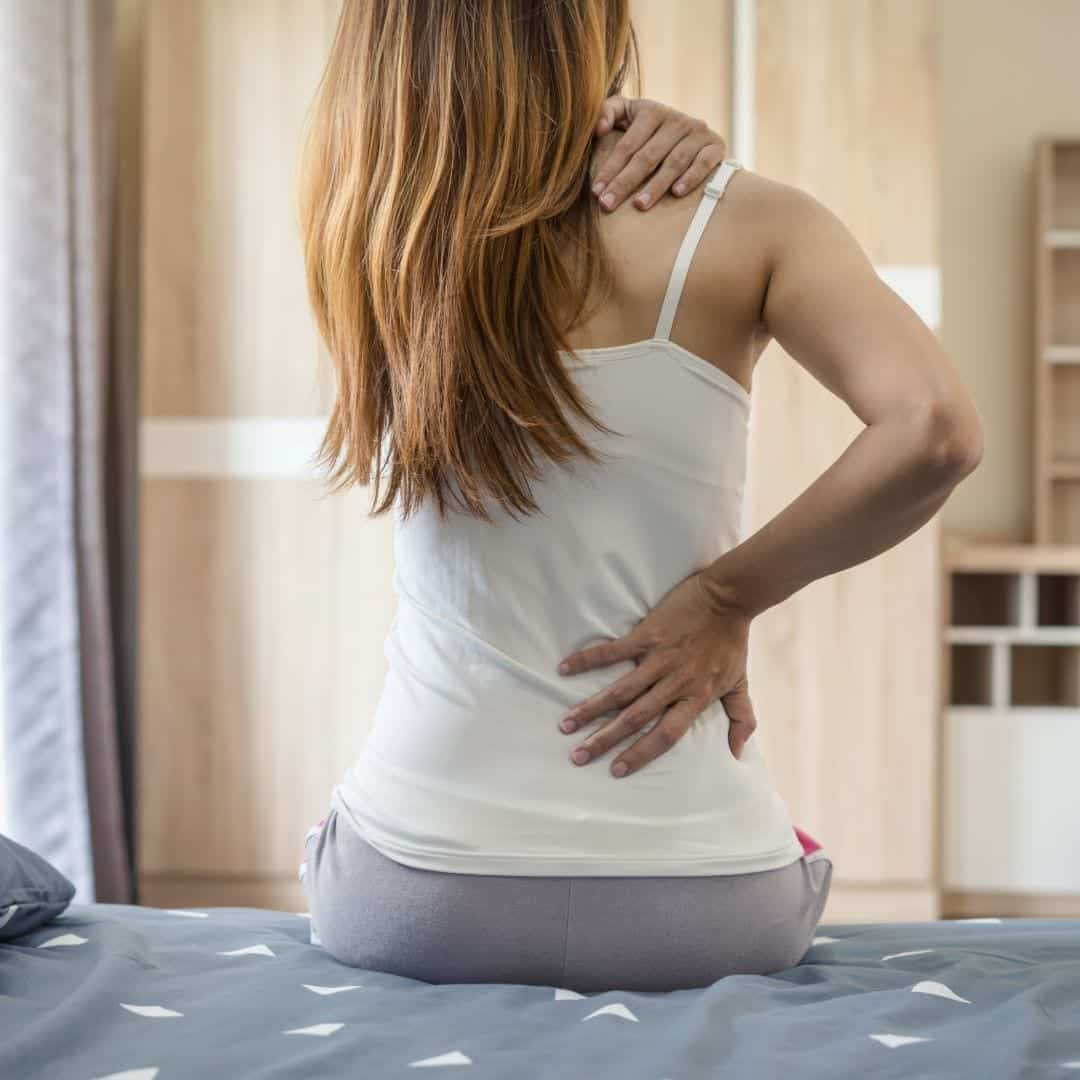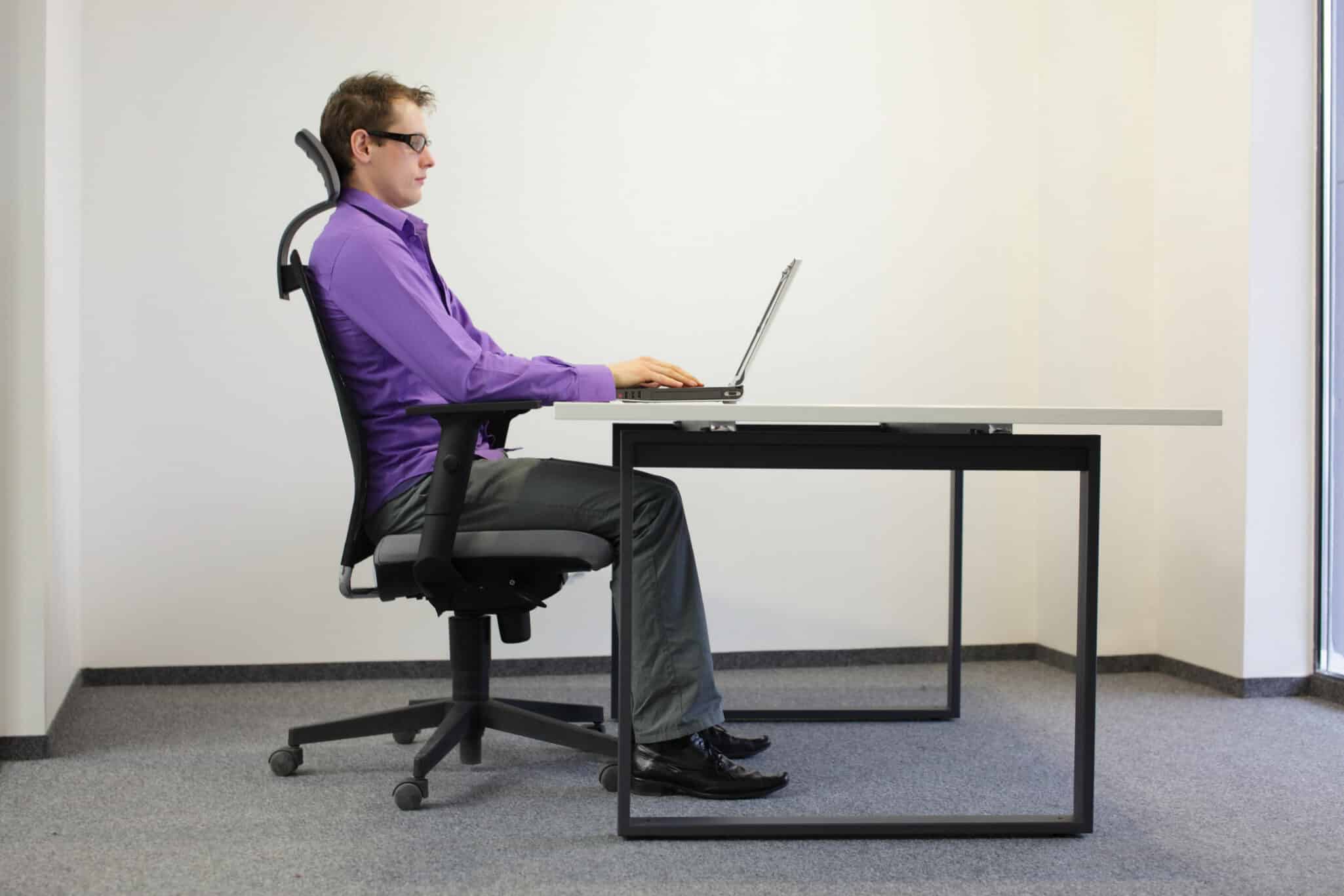
Our spine consists of 33 vertebrae — seven in the cervical spine, 12 in the thoracic spine, and five in the lumbar spine. Below the lumbar spine are five fused vertebrae in the sacrum and four fused vertebrae in the coccyx. To keep all of those vertebrae from touching each other and to facilitate movement, 23 spinal discs are located between those vertebrae, not counting the sacrum and coccyx. There are six discs in the neck/cervical region, 12 in the mid-back/thoracic region, and five in the lower back/lumbar region.
Over time and through certain stresses (such as lifting a heavy object with improper form), our spinal discs can bulge or herniate. A herniation happens when the tough outer shell of the disc tears, allowing the inner gel of the disc to push outward through the shell. This will lead to pain as the herniated disc pushes on the spinal cord or on nerve roots exiting the spinal canal.
When this happens in the neck, the cervical spine, the pain will affect the shoulders and arms. That’s where the team at Texas Neurosurgery comes in. Our expertise helps our patients from Dallas and the surrounding areas to get past the pain through a combination of conservative treatments and, if necessary, surgery to deal with cervical disc herniation.
What is Cervical Disc Herniation?
Our spinal discs are made up of a tough outer layer, known as the annulus fibrosus, and a gel-like center, known as the nucleus pulposus. Due to stresses or disc degeneration over time, these discs can push outward creating a bulging disc. More seriously, the annulus fibrosus can develop a tear. Now, with applied pressure to the disc, the inner gel-like material can push outward through the tear.
This is spinal disc herniation. When it happens in the six discs in the neck, this is cervical disc herniation.
What are the symptoms of a Herniated Cervical Disc?
A herniated cervical disc is one of the most common causes of neck pain. The gel that is pushing out of the torn disc can either push on a nerve root exiting the spinal canal or it can push on the spinal cord if the herniation is toward the inside of the vertebra.
If the disc is pressing on a nerve root, these are some common symptoms:
- Numbness or tingling in a shoulder or arm that may radiate down into the fingers
- Weakness in a hand or arm
If the disc is pressing on the spinal cord, the symptoms can be more serious:
- Stumbling or awkward walking
- Tingling or a shock-like feeling running down into your legs
- Problems using your hands and arms for fine motor skills
- Loss of balance and coordination
What causes Cervical Disc Herniation?
When we’re young, our spinal discs have lots of water in them. They are quite malleable and provide great shock absorption. As we age, the amount of water decreases. Now the discs are far less flexible, so when you move, twist, or turn you have a much greater risk of rupturing/herniating the disc.
It’s not always easy to figure out what caused a herniated cervical disc, as the pain can come on slowly. Here are some typical causes:
- Age — As mentioned above, with age our spinal discs lose water and become less flexible and prone to tearing. This is why herniated discs are common in people between the ages of 30 and 50. Interestingly, after age 50 our discs are so dry that they have less chance of tearing.
- Genes — Herniated discs run in families, pointing to a genetic predisposition.
- Movement — Sudden, jarring movements, such as during trauma, can cause a herniation.
- Sudden strain — Lifting a heavy object incorrectly or twisting your upper body while lifting can damage a disc.

Herniated discs can usually be treated with conservative options. These don’t make the disc become whole again, but they work around the herniation to minimize pain. In some patients, this is all that is needed. In others, they need to move on to more invasive options.
- Rest — Typically the first line of treatment for any neck or back injury, resting for a few days can relieve swelling and give your neck time to heal. You’ll need to avoid exercise or other activities where you have to bend or lift anything. Initial bed rest may be necessary to avoid movement for a day or two, but beyond that, you’ll need to keep moving to keep your muscles and joints from stiffening.
- Ice/Heat — Applying ice and/or heat can be effective. There is no right or wrong as to which is better. You can alternate them.
- Medications — Over-the-counter medications like ibuprofen (Motrin or Advil) or naproxen (Aleve or Naprosyn) can relieve pain and lessen inflammation. But you shouldn’t take them for more than 10 days. For short-term use, oxycodone options (Percocet and others) can help with extreme pain. Muscle relaxants and nerve pain medications are also helpful.
- Physical therapy — Physical therapy aims to strengthen the muscles that support your back, minimizing some of the pressure on your vertebra and the impacted nerves. Physical therapy includes stretching exercises, aerobic exercises, massage, ice and heat therapy, ultrasound, and electrical muscle stimulation.
- Injections — Injecting a corticosteroid into the space around your spinal nerve, known as an epidural injection, can eliminate the inflammation and ease the pain. We use x-ray guidance to find the right spot to inject the cortisone. This can provide relief for weeks or even months.
Types Of Surgery For Herniated Cervical Disc
Most cases of a herniated cervical disc don’t require surgery. But if rest and other treatments don’t improve your chronic pain within 4-6 weeks, surgery could be the next option. Surgery can be required if you’re experiencing serious muscle weakness and coordination problems with your arm or hand. This means the nerve root is being compressed to a degree that it could be permanently damaged. This will affect being able to use the arm, hand, or fingers served by the nerve root.
Surgery will be a good option if:
- All of the above treatments have not worked.
- Your symptoms keep getting worse.
- You have trouble standing or walking.
- You are losing control of your bladder or bowels.

Microdiscectomy
The damaged disc is removed to relieve pressure on the nerve or nerves. These surgeries are usually performed using minimally invasive methods, entering through the neck or the back.
Laminectomy
Often a part of a microdiscectomy, this involves removing a small piece of bone called the lamina from the back of the vertebra. The lamina provides a protective cover over your spinal cord. By removing a portion of the lamina, access to the herniated disc is gained and space can be created.
Artificial Disc Replacement
In this procedure, the herniated cervical disc is removed, and it is replaced with an artificial disc. The artificial disc returns the proper spacing between the vertebrae, and it eliminates the piece of the damaged disc that is pressing on the nerve roots or spinal cord.
Fusion
Fusion can be a part of many discectomies as the vertebrae can become unstable. Infusion, access is made through the neck or back and the cervical disc removed. A spacer is then placed between the vertebrae along with bone graft material. The vertebrae will likely be kept stable with a rod and screws. The bone graft material then fuses the two vertebrae and covers the rods and screws, creating a single piece instead of the former two vertebrae.
What happens if I don’t treat a Cervical Disc Herniation?
As mentioned above, most cervical disc herniations don’t require surgery. Rest can be all that’s needed to alleviate the pain. However, if your pain lasts more than a couple weeks you need to give us a call at Texas Neurosurgery so we can examine your neck. If you have tingling, weakness, and some loss of function, your nerve compression is endangering the future use of your arm, hand, or fingers.
What should I do to protect my neck if I have a Herniated Disc?

Most herniated discs get better on their own or with treatment. But that doesn’t mean they cannot flare up again. After all, the disc did not repair itself; the pain it was causing was simply steamed.
To protect your spine and prevent another herniated disc, you should always sit and stand up straight. If you have to stand for a long period of time, rest one foot on a stool or box to take the pressure off your back.
Stay at a healthy weight. This eliminates added strain on your neck and back.
When you lift anything heavy, do it correctly. Squat from your knees to pick up the item. Do not bend from the waist. And don’t lift and turn at the same time.
Don’t smoke. Smoking can damage the discs in your spine.
Schedule a Cervical Disc Herniation Consultation Today
If you’re interested in learning more about cervical disc herniation please contact us for a consultation with one of our providers at 214-823-2052 or fill out our contact us form. We will discuss your needs and concerns, and determine your best course of action.

